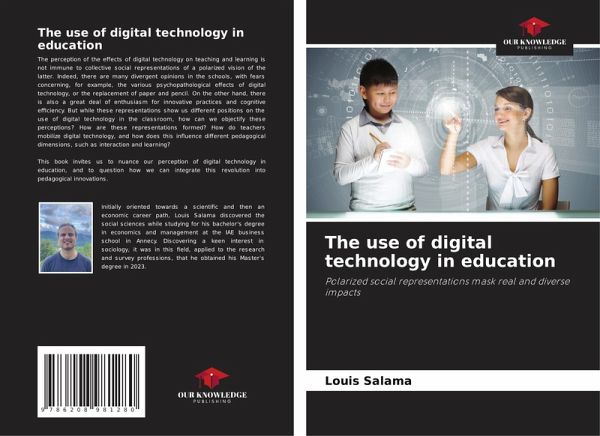
The use of digital technology in education
Polarized social representations mask real and diverse impacts
Versandkostenfrei!
Versandfertig in 6-10 Tagen
40,99 €
inkl. MwSt.

PAYBACK Punkte
20 °P sammeln!
The perception of the effects of digital technology on teaching and learning is not immune to collective social representations of a polarized vision of the latter. Indeed, there are many divergent opinions in the schools, with fears concerning, for example, the various psychopathological effects of digital technology, or the replacement of paper and pencil. On the other hand, there is also a great deal of enthusiasm for innovative practices and cognitive efficiency. But while these representations show us different positions on the use of digital technology in the classroom, how can we object...
The perception of the effects of digital technology on teaching and learning is not immune to collective social representations of a polarized vision of the latter. Indeed, there are many divergent opinions in the schools, with fears concerning, for example, the various psychopathological effects of digital technology, or the replacement of paper and pencil. On the other hand, there is also a great deal of enthusiasm for innovative practices and cognitive efficiency. But while these representations show us different positions on the use of digital technology in the classroom, how can we objectify these perceptions? How are these representations formed? How do teachers mobilize digital technology, and how does this influence different pedagogical dimensions, such as interaction and learning?This book invites us to nuance our perception of digital technology in education, and to question how we can integrate this revolution into pedagogical innovations.












